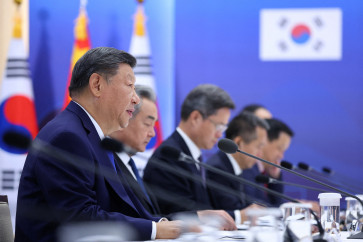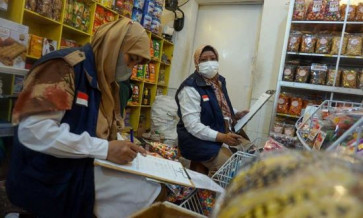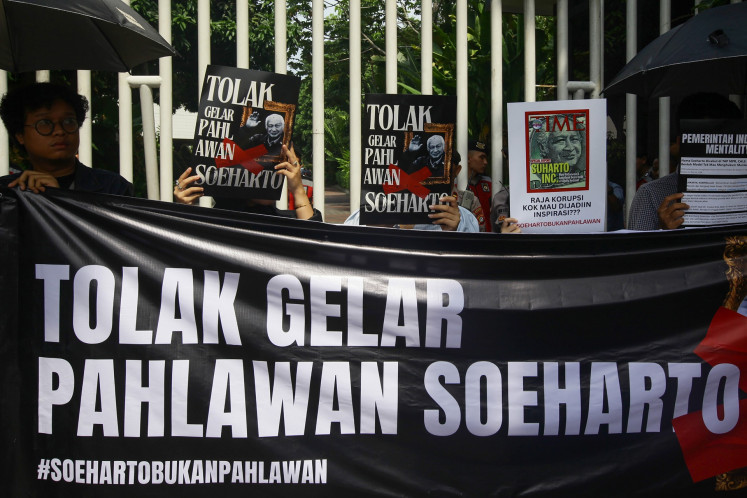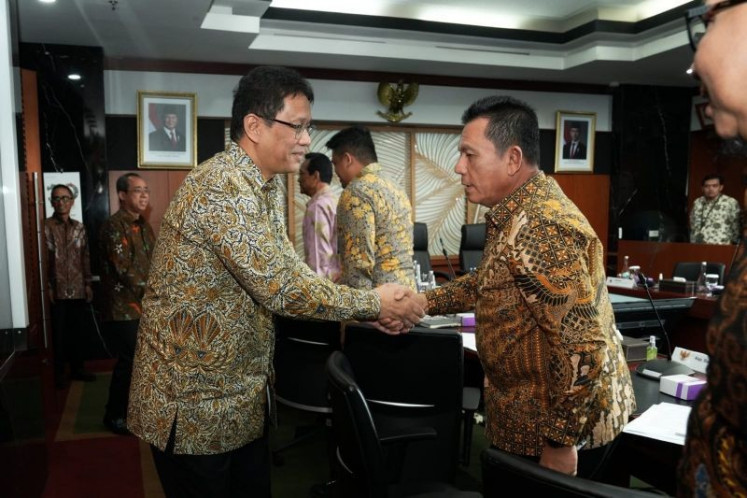Popular Reads
Top Results
Can't find what you're looking for?
View all search resultsPopular Reads
Top Results
Can't find what you're looking for?
View all search resultsCan CSOs stave off community involvement in oil palm?
Global forest conservation has changed a lot in the last century: It has shifted from top-down state policy to devolved âpeople firstâ initiatives
Change text size
Gift Premium Articles
to Anyone
G
lobal forest conservation has changed a lot in the last century: It has shifted from top-down state policy to devolved 'people first' initiatives. Millions of dollars have been spent on policy design, agency support and programs that try to work with local people to stop deforestation.
Indonesia in particular, has experienced many different types of devolved forest conservation programs including social forestry, integrated forest management and community-based forest management (CBFM).
Various REDD+ Readiness schemes aiming to 'incentivize' farmers to save forests and forest carbon have also been funded by bilaterals such as the Norwegian government.
But why after so many decades and so much money does forest clearing and burning continue in areas long-targeted by CBFM? What aren't we getting right?
There are no easy answers to these questions. Putting community forestry programs into practice isn't easy. It unfolds in a political and economic web that often makes it difficult to manage forests and plantations sustainably.
Historically, under Soeharto, politically oriented allocations of timber license agreements made it difficult to realize proper management and now governments are challenged by the rapid conversion of production forests into non-state forest land for agro-commodity expansion (e.g. oil palm).
While these bigger issues challenge sustainable CBFM, important local-level answers also shed light on why community-based approaches have had such difficulty supporting livelihoods and protecting forest amid these pressures.
Recent research by the University of Melbourne has shown that paying attention to the changes in farmer livelihood desires and expectations is important to understanding whether rural communities will accept and invest in the projects being offered to them.
In Berau regency in East Kalimantan, the researchers traced the history of conservation projects and looked at local responses to them.
_____________________________
To curb local farmers' use of the forest, the forest's primate conservation value was heavily promoted in the villages.
Snaking along the Lesan River are three Dayak communities that have received new conservation projects every five years or so for the last 15 years.
Beginning with CARE International in the early 2000s, farmers were introduced to intensive agriculture and cash cropping (e.g. peanuts and cacao); in 2003, World Education (WE) arrived and introduced rubber production in local fields; in 2003-2004, the Nature Conservancy (TNC) and local government then established the Sungai Lesan forest as a watershed protection forest/Hutan Lindung Sungai Lesan/HLSL (11,342.61 ha).
In 2005, the TNC recognized the HLSL as a 'high priority' orangutan habitat needing 'high-value' protection. In order to curb local farmers' use of the forest, the forest's primate conservation value was heavily promoted in the villages, with colorful banners, educational movies, puppet shows and workshops aiming to promote 'Orangutan stewardship' among farmers.
Most villagers, though, were concerned, and said that if they were to stop using the forest to protect orangutan, then they would need proper financial compensation.
The TNC responded by providing community-based livelihood activities including enhanced agricultural production and ecotourism infrastructure in the target villages.
Over time, though, many of the programs' livelihood benefits did not deliver proper financial benefits.
Instead, the local adat (customary) leadership and community members simply continued with those livelihood activities that they knew best, looked for wage-based jobs and sold more forest products.
As it turns out, each civil society organization (CSO)'s has failed to stop farmers from clearing forest and adopting oil palm from plantations nearby.
Despite initially resisting, the adat leadership who were once the TNC's 'ecological stewards', just recently agreed to have much of their village forests converted to palm oil.
The HLSL's prime orangutan habitat will thus soon be surrounded by palm oil. Why did this happen after the CSOs tried so hard?
The answer is clear ' the CSOs' programs did not match local desires for more profitable livelihoods. Even in remotest East Kalimantan, local Dayak farmers aspire to move beyond forest-based livelihoods.
They aspire for livelihood opportunities that bring in cash money to get modern things ' from motorbikes to televisions.
While adding value to traditional livelihood activities and establishing ecotourism may offer occasional income, most farmers believe that these activities do not offer enough income for the livelihood capital they need and desire to really enhance their income on a sustained basis.
Unless CSOs move quickly to provide fixed-capital livelihood support that is connected with well-established markets, such as small-scale timber processing, there is little hope that farmers will support CSO causes and decide against adopting palm oil.
As many young Dayak farmers want non-agricultural jobs in or near cities, more and more will not want to farm like their parents did.
And when they do stay in villages, they will try hard to raise their family's standard of living by clearing forests for more profitable agriculture, such as palm oil, for the benefit of their children's future.
CSO livelihood programs must therefore provide local farmers with opportunities and income that are equal to or greater than the potential financial return from oil palm production and other profitable agriculture. There is no time to waste.
______________________________
Wolfram Dressler is ARC Future fellow, School of Geography, University of Melbourne. Edi Purwanto is director of Tropenbos International-Indonesia Program, Bogor, West Java.










